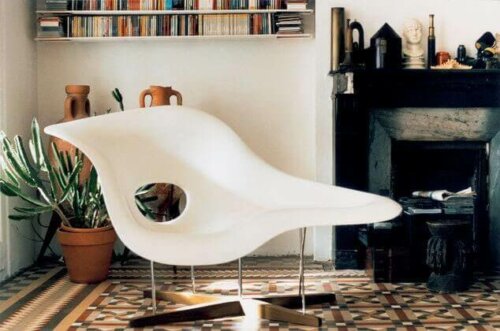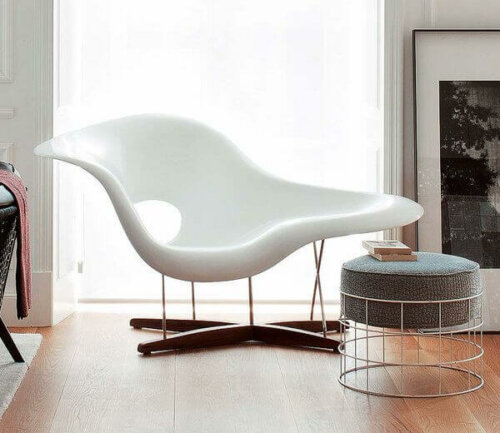La Chaise, Art Takes Shape

The world of interior design offers all kinds of possibilities. More and more designers are creating completely innovative designs. As a result, we want to mention La Chaise, which is art taking shape as a chair.
The 20th century left a very important legacy in terms of furniture. However, there is no doubt that the innovation of these decorative resources broke with traditions from the 19th century.
There are certain avant-garde influences. These become a point of reference and a model for innovators to follow. This is where artists give free rein to their imagination. Limits have to be broken to create new interior designs.
The historical context of La Chaise

Charles and Ray Eames created La Chaise in 1948 for a low-cost furniture contest at the MoMA in New York. Since then, it has become one of the most interesting works in the world of interior design. This is ultimately due to the subtlety of the design.
Where did they get the inspiration for such a beautiful creation? After observing the Floating Figure sculpture by Gaston Lachaise, the designers wanted to make an armchair using the same shape. They wanted to create a seat where the user can recline in the same way the sculpture does.
At the same time, they wanted to create a connection with the surrealism of Salvador Dalí. As a result, you can see the direct relationship with the artistic currents from the middle of the 20th century. It’s a way of introducing a bit of avant-garde into homes.
Eames’ aesthetic perception reflects the innovation and creativity of his work.
5 fundamental points for understanding La Chaise

When analyzing La Chaise, you should pay attention to the shape, color, design, aesthetics, and size. Then, you’ll be better able to understand what it can contribute to an interior at a decorative level.
- The irregularity of the seat is evident from the first look. The designers didn’t want symmetry. Instead, they created a more original, freedom of lines. They adopt a form beyond what’s “normal.”
- The original material is fiberglass that is painted white. Now, the chair is made with a lacquered polyurethane of the same color.
- The lower structure is made of chrome steel rods. These support the seat and make it stable and firm. The seat is completely stable once these supports are put in place. In this way, the chair has balance and consistency.
- The seat also has curved lines with a backrest for comfort. Then, there is an opening in the back, which adds some lightness. On the other hand, the shape extends so the user can lie down with their legs up.
- This chair indeed takes up a lot of space. The most important aspect is that you place this piece of furniture in a place of prominence. It can energize the space. Then, it can become an aesthetic axis within your decoration.
Which style fits best?

Of course, La Chaise is not a chair that matches any type of decoration. It can accommodate a large number of spaces, but they must correspond with the aesthetics.
However, some styles fit well with this seat, such as minimalism and contemporary looks. Homes with these styles match best with the style of the chair.
On the other hand, don’t make the mistake of using this chair with rustic, classic, traditional, or rural spaces. It’s a naturally modern piece. As a result, it would contrast too much with these styles.
A captivating elegance
Apart from the aesthetic aspects that we’ve already mentioned, we should mention that this chair is very comfortable. It adapts perfectly to the body and creates a feeling of peace and relaxation.
It also looks elegant and is truly beautiful. So if your house has the right style, it’s a piece of furniture to consider.
All cited sources were thoroughly reviewed by our team to ensure their quality, reliability, currency, and validity. The bibliography of this article was considered reliable and of academic or scientific accuracy.
- Fiell, Charlote; Fiell, Peter: Design of the 20th Century, Taschen, 1999.








